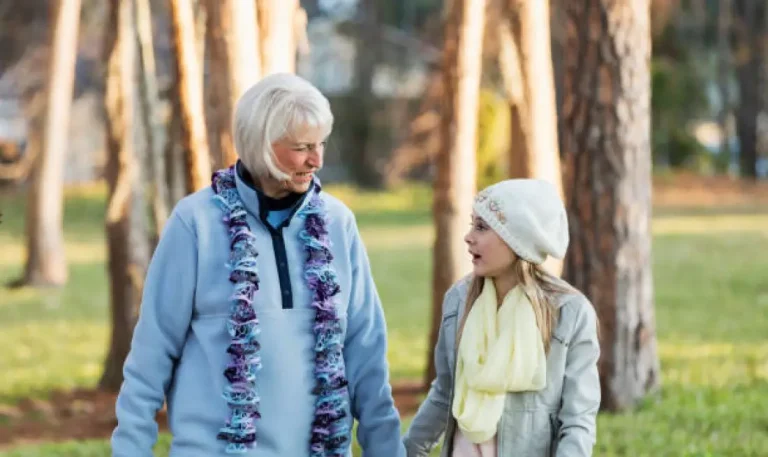The morning mist clung to the windows of the courthouse like ghostly fingers, and eight-year-old Isla Martinez pressed her face against the cold glass of the car window, watching droplets of condensation trace irregular paths downward. Her small hand rested on the warm fur of Moose, a golden retriever whose amber eyes seemed to understand everything she couldn’t say aloud. In the three months since Moose had entered her life, he had become more than a companion—he had become her voice when words failed her, her strength when fear threatened to overwhelm her small frame.
“Are you ready, sweetheart?” asked Megan Thompson, turning from the front passenger seat to look at Isla with eyes full of gentle concern. Megan and her husband Jim had been Isla’s foster parents for eight months now, ever since the night social workers had removed her from her biological father’s house with nothing but the clothes on her back and trauma that ran deeper than anyone initially realized.
Isla nodded slowly, though her grip on Moose’s collar tightened. The golden retriever, specially trained as a therapy dog for children who had experienced severe trauma, sensed her anxiety and shifted closer, his warm body providing a barrier against the world that had hurt her so deeply.
Jim Thompson parked the car in front of the imposing granite courthouse, its neoclassical columns reaching toward a gray sky that seemed to mirror the weight of the day ahead. “Remember, Isla,” he said softly, his voice carrying the patience that had helped her feel safe for the first time in years, “you don’t have to say anything you don’t want to say. Moose will be right there with you, and so will we.”
The past eight months had been a journey of small victories and setbacks for all of them. When Isla first arrived at the Thompson household, she had been a shadow of a child—malnourished, fearful, and so deeply traumatized that she hadn’t spoken a complete sentence for weeks. Night terrors plagued her sleep, and any sudden movement or raised voice would send her scrambling to hide in the closest available space, her small body trembling with remembered fear.
It was Dr. Sarah Chen, a child psychologist who specialized in trauma cases, who had first suggested Moose. “Some children find it easier to connect with animals initially,” she had explained to Jim and Megan during one of their weekly sessions. “A therapy dog can provide a sense of safety and unconditional acceptance that allows them to begin healing at their own pace.”
Moose had arrived on a Tuesday afternoon in late spring, his golden coat gleaming in the sunlight as he bounded up the front steps of the Thompson home. Isla, who had been watching from behind the living room curtains, had disappeared upstairs the moment the dog entered the house. But something about Moose was different from the other therapeutic interventions they had tried. Where human contact still felt threatening to Isla, Moose’s presence was somehow non-invasive, non-demanding.
The breakthrough had come gradually. First, Isla began leaving her bedroom door open when Moose was nearby. Then she started eating meals in the same room where the dog was lying. Within two weeks, she was sitting on the floor next to him while watching television, her small hand occasionally reaching out to touch his fur. And then, one evening while Jim and Megan were cleaning up after dinner, they heard something that made them both freeze—the sound of Isla talking.
She was in the living room, curled up next to Moose, and she was telling him about her day in a voice so soft they had to strain to hear it. “The lady at the grocery store smiled at me today,” she whispered into his ear. “And Megan let me pick out my own cereal. The one with the rainbow colors.”
From that moment forward, Moose became Isla’s confidant, the recipient of all the words she couldn’t yet share with the humans in her life. Through weeks of patient observation and professional guidance, Dr. Chen and the therapy team began to understand that Isla was not just talking to Moose—she was training him to respond to her emotional states, teaching him to recognize the subtle signals of her distress and to provide comfort accordingly.
“It’s actually quite remarkable,” Dr. Chen had explained to Jim and Megan during one of their progress meetings. “Isla has essentially created her own communication system with Moose. She’s taught him to recognize when she’s experiencing anxiety related to her trauma, and he’s learned to respond in ways that help her self-regulate.”
The system was sophisticated in its simplicity. When Isla felt safe and happy, she would scratch behind Moose’s ears in a specific pattern, and he would respond with gentle tail wagging and relaxed body language. When she felt anxious but not in immediate distress, she would place her hand flat on his back, and he would move closer to her, providing the pressure therapy that helped calm her nervous system. But when Isla encountered something or someone that triggered her deepest trauma—the memories of her father Leonard’s abuse—she had taught Moose to respond to a different signal entirely.
The custody hearing had been scheduled after Leonard Martinez, Isla’s biological father, had completed a court-mandated rehabilitation program and petitioned for the return of his daughter. Despite the documented history of neglect and abuse that had led to Isla’s removal from his home, Leonard’s lawyer was arguing that he had completed his required therapy, maintained steady employment, and deserved a chance to rebuild his relationship with his daughter.
The case had been challenging from the beginning. Leonard Martinez was a master manipulator who had successfully convinced court officials, social workers, and even some family members that his past behavior had been the result of stress and substance abuse issues that were now under control. He presented well in court—clean-cut, articulate, and seemingly remorseful about his past mistakes. His apartment had been inspected and found suitable for a child, and he had completed every requirement the court had set for him.
But Isla’s behavior told a different story. In the weeks leading up to the hearing, as the possibility of returning to her father’s custody became more real, she had begun to regress. The nightmares had returned with increased frequency, and she had stopped speaking to everyone except Moose. Dr. Chen had documented these changes meticulously, but the legal system required more concrete evidence than a child’s behavioral patterns to keep a father from regaining custody of his biological daughter.
As they walked up the courthouse steps that morning, Isla’s legs felt unsteady beneath her. She was wearing a new dress that Megan had bought specially for the hearing—navy blue with small white flowers, paired with white tights and black shoes that clicked softly against the marble floor of the courthouse lobby. Moose walked beside her, his therapy dog vest clearly identifying his role, though several people still stared at the unusual sight of a dog in a courtroom setting.
Sarah Mitchell, the guardian ad litem assigned to represent Isla’s interests, met them at the security checkpoint. Sarah was a lawyer who specialized in child advocacy, and over the past months, she had spent considerable time trying to understand Isla’s needs and wishes regarding the custody arrangement.
“Good morning, Isla,” Sarah said, kneeling down to the child’s eye level. “I know today feels scary, but remember that everyone here wants what’s best for you. Judge Dawson is very kind, and she understands that sometimes children communicate in different ways than adults do.”
Isla nodded but didn’t speak. Her hand found Moose’s head, and she ran her fingers through his fur in the specific pattern that signaled her need for comfort. The dog responded immediately, pressing closer to her leg and offering the steady, warm presence that had become her anchor in an uncertain world.
The courtroom was smaller than Isla had imagined, with wood-paneled walls and tall windows that let in streams of gray morning light. Judge Margaret Dawson presided from behind an imposing bench, her silver hair pulled back in a neat bun and her expression serious but not unkind. She had been briefed on Isla’s situation and the unusual role that Moose played in the child’s communication, and she had made the rare decision to allow the therapy dog in her courtroom.
Leonard Martinez sat at a table on the opposite side of the room from where Isla would be seated with her advocates. He looked different from the man she remembered—cleaner, better dressed, more controlled. But when their eyes met briefly as she entered the room, Isla felt the familiar surge of terror that had haunted her nightmares for months. Her breathing became shallow, and her hand immediately moved to rest flat against Moose’s back, signaling her distress.
The dog responded instantly, shifting his position to create a physical barrier between Isla and her father while maintaining contact with her hand. The subtle movement was barely noticeable to most observers, but Sarah Mitchell caught it and made a note in her legal pad.
The hearing began with procedural matters and testimony from social workers, therapists, and court officials. Leonard’s lawyer painted a picture of a reformed man who had learned from his mistakes and was ready to provide a stable, loving home for his daughter. Character witnesses spoke about Leonard’s regular attendance at AA meetings, his steady job at a auto parts store, and his expressed desire to make amends for his past behavior.
“My client has completed every requirement set forth by this court,” argued Leonard’s attorney, a sharp-dressed woman named Patricia Wells. “He has maintained sobriety for eight months, attended weekly therapy sessions, and secured stable housing and employment. The bond between a parent and child is sacred, Your Honor, and Mr. Martinez deserves the opportunity to rebuild that relationship with his daughter.”
Dr. Chen testified about Isla’s progress in foster care and the concerning regression in her behavior as the custody hearing approached. “The child shows clear signs of trauma response when discussing the possibility of returning to her biological father’s care,” she explained. “While Mr. Martinez may have completed the court’s requirements on paper, Isla’s emotional and psychological well-being must be the primary consideration.”
But Leonard’s lawyer was prepared for this testimony. “Your Honor, children often feel anxiety about change, even positive change. Dr. Chen’s observations could just as easily be attributed to the uncertainty of the legal process rather than any specific fear of my client. We would argue that reunification anxiety is a normal part of the process.”
Judge Dawson listened carefully to all the testimony, reviewing documents and asking pointed questions of both sides. But it was clear that the case was not straightforward. Leonard Martinez had, on paper, done everything required of him. The abuse that had led to Isla’s removal had been documented, but it had also been relatively subtle—neglect, emotional manipulation, and psychological intimidation rather than the kind of obvious physical abuse that left clear evidence.
“I’d like to hear from Isla herself,” Judge Dawson announced, causing a stir in the courtroom. “I understand she may have difficulty speaking, but I believe it’s important to give her an opportunity to express her feelings about the custody arrangement.”
Sarah Mitchell had prepared for this possibility, though she wasn’t certain how Isla would respond to being put on the spot in such a formal, intimidating environment. They had discussed the possibility of Isla being asked to speak, and Dr. Chen had worked with her on ways to communicate her feelings if she felt comfortable doing so.
Isla was called to a small chair that had been placed near the judge’s bench, with Moose lying down beside her. She looked impossibly small in the formal courtroom setting, her dark hair pulled back with the ribbon barrette that Megan had carefully placed that morning. Her hands rested on Moose’s fur, and she stared down at the floor rather than looking at any of the adults surrounding her.
“Hello, Isla,” Judge Dawson said gently, her voice taking on the warm tone she reserved for child witnesses. “I know this is scary, but I’m hoping you can help me understand what would make you feel safe and happy. Can you tell me about living with Jim and Megan?”
Isla’s voice, when it finally came, was barely above a whisper. “They’re nice to me. They let me have Moose.”
“And Moose is your special dog?”
Isla nodded, her hand moving in the gentle scratching pattern behind Moose’s ears that signaled contentment. The dog’s tail thumped softly against the floor, and some of the tension in Isla’s shoulders seemed to ease.
“Can you tell me how you feel about the idea of living with your father again?” Judge Dawson asked, her voice still gentle but probing.
The change in Isla was immediate and dramatic. Her entire body went rigid, her breathing became shallow and rapid, and her hand moved to press flat against Moose’s back in the signal for distress. But this time, she also looked directly at Leonard Martinez for the first time since entering the courtroom.
And then something extraordinary happened.
Isla made a subtle hand gesture—a quick motion with her fingers that looked almost accidental to most observers. But Moose, who had been trained to respond to Isla’s specific trauma signals, reacted immediately. He stood up, positioned himself between Isla and Leonard, and let out a low, sustained growl that filled the silent courtroom.
The growl wasn’t aggressive in the way that might suggest an untrained or dangerous dog. It was controlled, purposeful, and clearly directed at a specific target. Moose’s body language indicated alert protectiveness rather than aggression, but the message was unmistakable—this dog perceived a threat to his young handler.
The courtroom erupted in surprised murmurs. Leonard’s lawyer immediately objected. “Your Honor, this is highly irregular. A dog’s behavior cannot be considered evidence in a custody proceeding.”
But Judge Dawson held up her hand for silence, her attention focused entirely on the small girl and the golden retriever who had just communicated something that hours of testimony had failed to convey.
“Isla,” the judge said softly, “can you tell me why Moose is upset?”
Isla’s voice was still barely audible, but her words carried the weight of absolute truth. “Because he knows. Moose never lies.”
The simplicity of her statement hit the courtroom like a physical force. This wasn’t just a dog reacting to general anxiety or confusion. This was a highly trained therapy animal responding to specific trauma signals from a child who had taught him to recognize the source of her deepest fears.
Dr. Chen quickly stood to explain the significance of what had just occurred. “Your Honor, Isla has spent months training Moose to recognize and respond to her trauma triggers. The dog’s reaction is not random—it’s a learned response to Isla’s psychological state when she encounters the specific source of her trauma.”
Sarah Mitchell added, “This is exactly the kind of communication we’ve been hoping Isla would be able to share with the court. She’s telling us, through Moose, that her father represents a threat to her sense of safety.”
Leonard Martinez looked stunned by the turn of events. His carefully maintained composure began to crack as he realized that his daughter’s silence, which he had counted on to avoid detailed testimony about his past behavior, had been replaced by a form of communication that was arguably more powerful than words.
“This is ridiculous,” his lawyer argued. “We’re talking about a dog, not a witness. This cannot be the basis for a custody decision.”
But Judge Dawson had seen enough custody cases involving traumatized children to understand what she was witnessing. “Ms. Wells, while I agree that a dog’s behavior cannot be considered testimony in the traditional sense, I cannot ignore what appears to be a clear communication from a child who has been struggling to express her feelings about this custody arrangement.”
She turned back to Isla, who was now sitting more calmly with Moose having settled back down beside her, though the dog remained alert and watchful. “Isla, sweetheart, is there anything else you want to tell me about how you feel?”
Isla looked up at the judge, and for the first time that day, she spoke in a voice that was clear and steady. “I want to stay with Megan and Jim. I want to keep Moose. I don’t want to go back.”
The words hung in the air like a bell that had been rung, their clarity cutting through all the legal arguments and procedural complexities that had dominated the hearing. This was a child expressing her wishes about her own future, supported by a therapeutic relationship that had allowed her to communicate in a way that traditional methods had not achieved.
Leonard Martinez’s lawyer made one final attempt to discredit the significance of the moment. “Your Honor, we maintain that this is merely the result of alienation. The child has been influenced by her foster parents and therapists to fear her biological father. The dog is responding to learned behaviors, not genuine threat assessment.”
But as she spoke, Leonard himself seemed to deflate. Perhaps it was seeing his daughter’s clear rejection of him, or perhaps it was the realization that his carefully constructed facade of rehabilitation was crumbling in the face of his victim’s truth-telling. Whatever the reason, the fight seemed to go out of him.
Judge Dawson took a long moment to review her notes and consider everything she had heard and witnessed. When she finally spoke, her voice carried the authority of someone who had made a difficult but clear decision.
“After careful consideration of all testimony and evidence presented, including the unique communication demonstrated here today between Isla and her therapy dog, this court finds that returning Isla to her biological father’s custody would not be in her best interests at this time.”
The relief in the courtroom was palpable. Jim and Megan Thompson exchanged a look of profound gratitude, while Sarah Mitchell squeezed Isla’s shoulder gently.
“Furthermore,” Judge Dawson continued, “I am impressed by the progress Isla has made in her current foster placement and the innovative therapeutic work that has allowed her to express her wishes regarding her future. I am therefore approving the Thompson family’s petition to adopt Isla, should they choose to pursue that course.”
Isla looked up at Megan and Jim with eyes that held more hope than fear for the first time since the hearing began. “Can I keep Moose?” she asked.
“Forever and always,” Megan whispered, tears streaming down her cheeks.
As they prepared to leave the courtroom, Leonard Martinez approached his daughter one last time. Moose immediately tensed, but Leonard stopped at a respectful distance.
“I’m sorry, Isla,” he said quietly. “I know I hurt you, and I’m sorry you were scared of me. Maybe someday, when you’re older, you’ll let me try to do better.”
Isla looked at him for a long moment, her hand resting on Moose’s head. “Maybe,” she said finally. “But not now.”
Leonard nodded and walked away, his shoulders slumped with the weight of consequences he had finally been forced to face.
As they walked out of the courthouse into the afternoon sunlight, Isla felt something she hadn’t experienced in months—a sense of safety that extended beyond the immediate moment. She had found her voice, not through words alone but through the faithful partnership of a dog who had learned to speak her language of survival and healing.
“Thank you, Moose,” she whispered into his fur as they walked toward the car that would take them home.
The golden retriever looked up at her with intelligent eyes that seemed to understand everything, his tail wagging in the specific rhythm that, in their private language, meant “you’re safe now, and you always will be.”
Six months later, Isla Martinez-Thompson stood in the backyard of the house she now legally called home, throwing a tennis ball for Moose while her adoptive parents prepared dinner inside. She had started speaking more regularly, had begun third grade at a new school where she was making friends, and had even started sleeping through the night without nightmares.
Dr. Chen continued to work with her on processing her trauma, but now their sessions often included discussions about Isla’s future rather than just healing from her past. She had expressed interest in working with animals when she grew up, and perhaps helping other children who had experienced trauma.
“Moose taught me that it’s okay to be scared,” she told Dr. Chen during one of their sessions. “But he also taught me that I don’t have to be scared alone.”
The therapy dog, now officially adopted by the Thompson family, had become more than just Isla’s companion—he had become a bridge between her traumatic past and her hopeful future, proof that healing could come in unexpected forms and that sometimes the most important conversations happen without words at all.
In quiet moments, when Isla reflected on the day in the courtroom that had changed her life, she understood that Moose hadn’t just been her voice—he had been her advocate, her protector, and the living proof that she deserved to be safe, loved, and heard. The golden retriever had given her something she had never experienced before: the confidence to tell her own story, even when that story was too difficult for words.
And in doing so, he had given her the greatest gift of all—the knowledge that her voice mattered, her feelings were valid, and her safety was worth fighting for, no matter how small or powerless she might feel in a world of adults who sometimes forgot that children’s truths are the most important truths of all.

Emily Johnson is a critically acclaimed essayist and novelist known for her thought-provoking works centered on feminism, women’s rights, and modern relationships. Born and raised in Portland, Oregon, Emily grew up with a deep love of books, often spending her afternoons at her local library. She went on to study literature and gender studies at UCLA, where she became deeply involved in activism and began publishing essays in campus journals. Her debut essay collection, Voices Unbound, struck a chord with readers nationwide for its fearless exploration of gender dynamics, identity, and the challenges faced by women in contemporary society. Emily later transitioned into fiction, writing novels that balance compelling storytelling with social commentary. Her protagonists are often strong, multidimensional women navigating love, ambition, and the struggles of everyday life, making her a favorite among readers who crave authentic, relatable narratives. Critics praise her ability to merge personal intimacy with universal themes. Off the page, Emily is an advocate for women in publishing, leading workshops that encourage young female writers to embrace their voices. She lives in Seattle with her partner and two rescue cats, where she continues to write, teach, and inspire a new generation of storytellers.









